Ever thought about firing your gun in the backyard, but worried about accidentally landing in hot water with the law? This crosses the mind of plenty of gun owners, especially those living out in the countryside who’d love some laid-back target practice at home.
Trouble is, state and local rules on firing guns differ wildly—what’s fine in one county might land you in court elsewhere. Nobody wants to deal with cranky neighbors or an awkward visit from the sheriff.
So before you line up bottles as targets or start popping rounds into hay bales, get familiar with these six essential firearm laws first. Knowing these regulations can keep you out of trouble, protect your rights, and even save you from embarrassing encounters with local law enforcement.
Your backyard practice sessions should stay relaxing, responsible, and totally stress-free.
Key Takeaways
Knowing your state’s rules is critical—Maryland lets you shoot freely if all rounds stay inside your yard, but Connecticut wants at least 500 feet between your spot and the nearest building.
Land size counts big-time, too; down in Texas, you’ll need 10 acres minimum to use a shotgun and at least 50 acres before breaking out rifles or pistols.
Bullets are speedy travelers, sometimes zooming up to two miles—that’s why a solid backstop, at least four feet deep with packed dirt or sand, is essential for keeping things safe.
Guns aren’t exactly quiet neighbors, hitting ears with sounds between 140-175 dB (that’s louder than your average jet engine), so ear protection is a must-have accessory.
Messing up backyard shooting laws can lead to misdemeanors and losing your guns for 10 years, or worse, a felony conviction stripping away gun rights forever—definitely not something worth risking.
Table of Contents
Factors Determining Backyard Gun Use
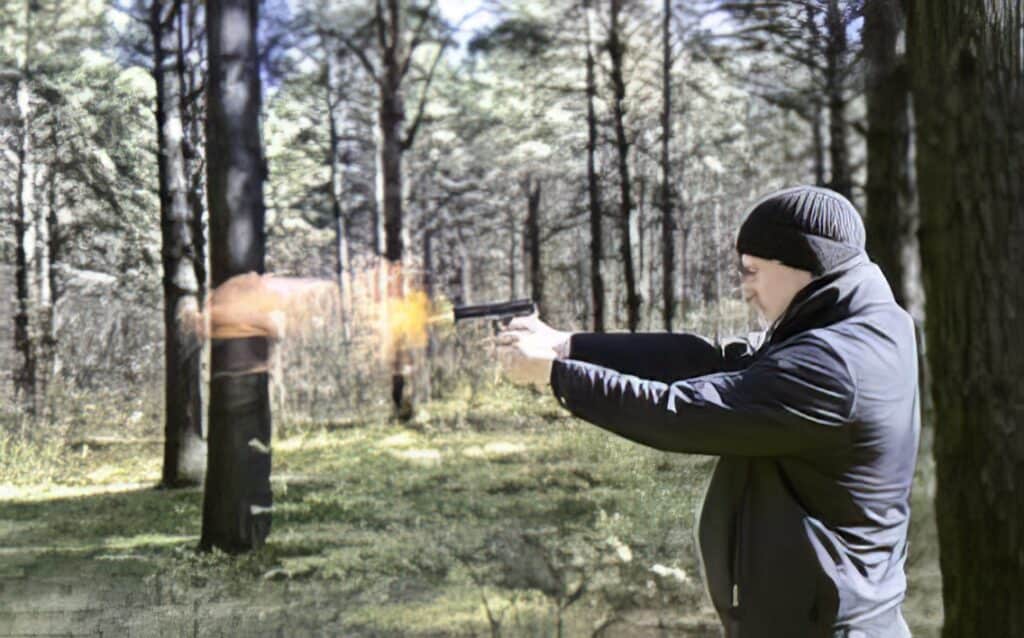
Before you pull that trigger in your yard, you need to check a bunch of rules. Your state laws, local ordinances, and property line limits will make or break your backyard shooting plans.
Review official government websites and interactive maps provided by state authorities to verify current regulations and ensure compliance.
State and Local Laws
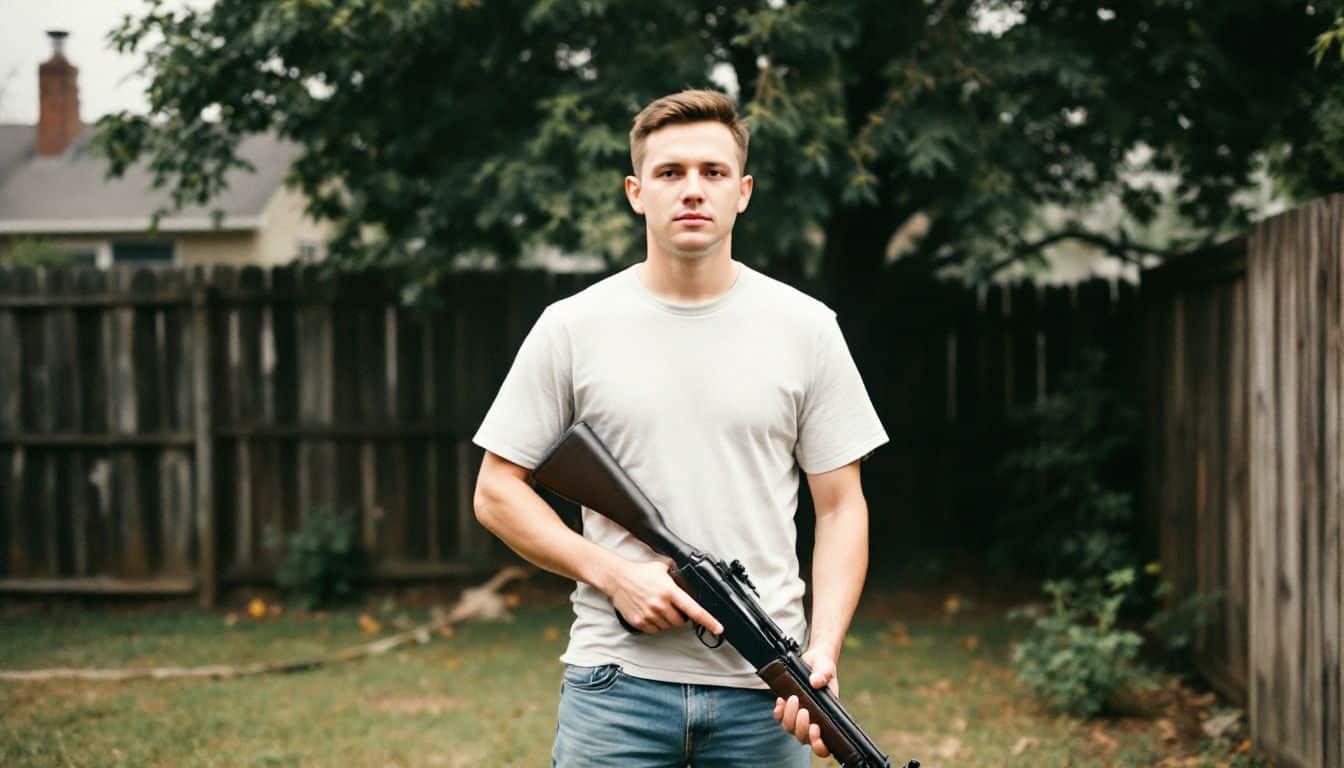
Gun laws for backyard shooting swing wildly around America: what flies in one state might cost you big fines in another. If you’re in Maryland, firing off rounds in your backyard is fine—as long as your bullets don’t stray beyond your property lines.
Meanwhile, Connecticut says no dice if you’re within 500 feet of buildings. Texas lets each town play by its own rules; so what’s gravy out in ranch country might land you in hot water closer to town.
Local rules usually beat state laws, particularly in neighborhoods where houses squeeze together like subway riders at rush hour. Say you like to build your own firearms from AR15 uppers you ordered online—cool hobby, by the way—but you’d better comb through your county and city codes carefully.
Otherwise, firing up your new gear at home could send your relaxing afternoon up in smoke—legally speaking, anyway.
My buddy Jake learned this the hard way: he set up targets in his suburban yard, pulled the trigger, and minutes later had some very unamused officers ringing his doorbell. Talk about awkward.
Laws are picky—always double-check the fine print. It’s just common sense—like aiming carefully at your target, because once that bullet flies, you can’t call it back.
Consult official resources and interactive tools provided by local agencies to gain a clearer understanding of firearm safety standards and current Maryland shooting laws.
Zoning Regulations
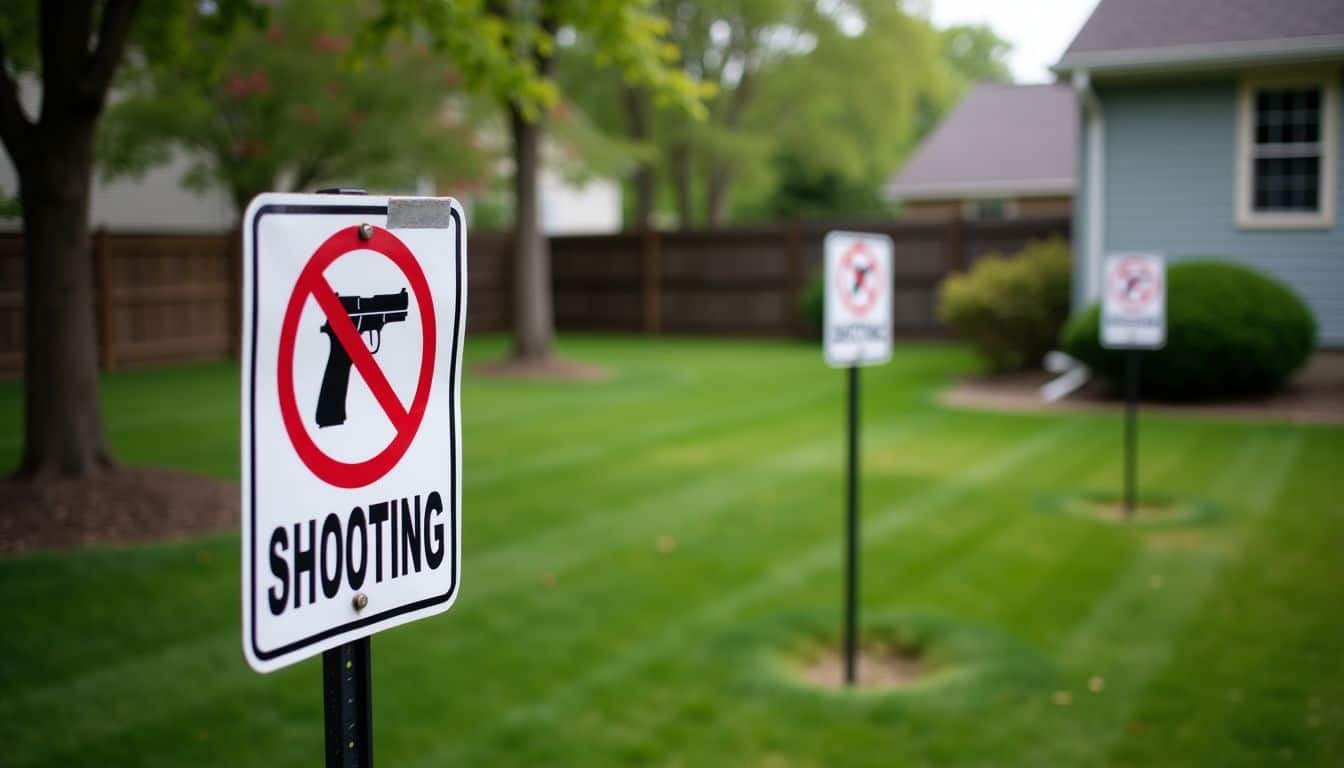 Zoning laws can either boost or tank your backyard shooting dreams. Lots of counties divide land into zones, allowing or restricting backyard gun use based on crowd size and property usage.
Zoning laws can either boost or tank your backyard shooting dreams. Lots of counties divide land into zones, allowing or restricting backyard gun use based on crowd size and property usage.
Believe me, I found out the rough way. Moved from quiet, rural Harford County to bustling suburban Montgomery County, Maryland. Overnight, my Saturday afternoon shooting hobby turned illegal—talk about a buzzkill! Town ordinances often toss in extra hurdles, too.
Easton, for example, demands a minimum three-acre plot for backyard shooting. Stratford requires shooters to stay 300 feet away from any property line.
Then there’s your neighborhood rules—yeah, the HOA police. Homeowners associations often fully prohibit any firearm discharge, no matter what’s allowed by the state. Norwalk sticks to strict rules—only licensed hunters can shoot, and even then, specific ammo and distances from houses or roads are strictly defined.
Check your property deed carefully, read local compliance rules—you got this. Now, let’s peek at how different states approach backyard shooting.
Property Size and Location
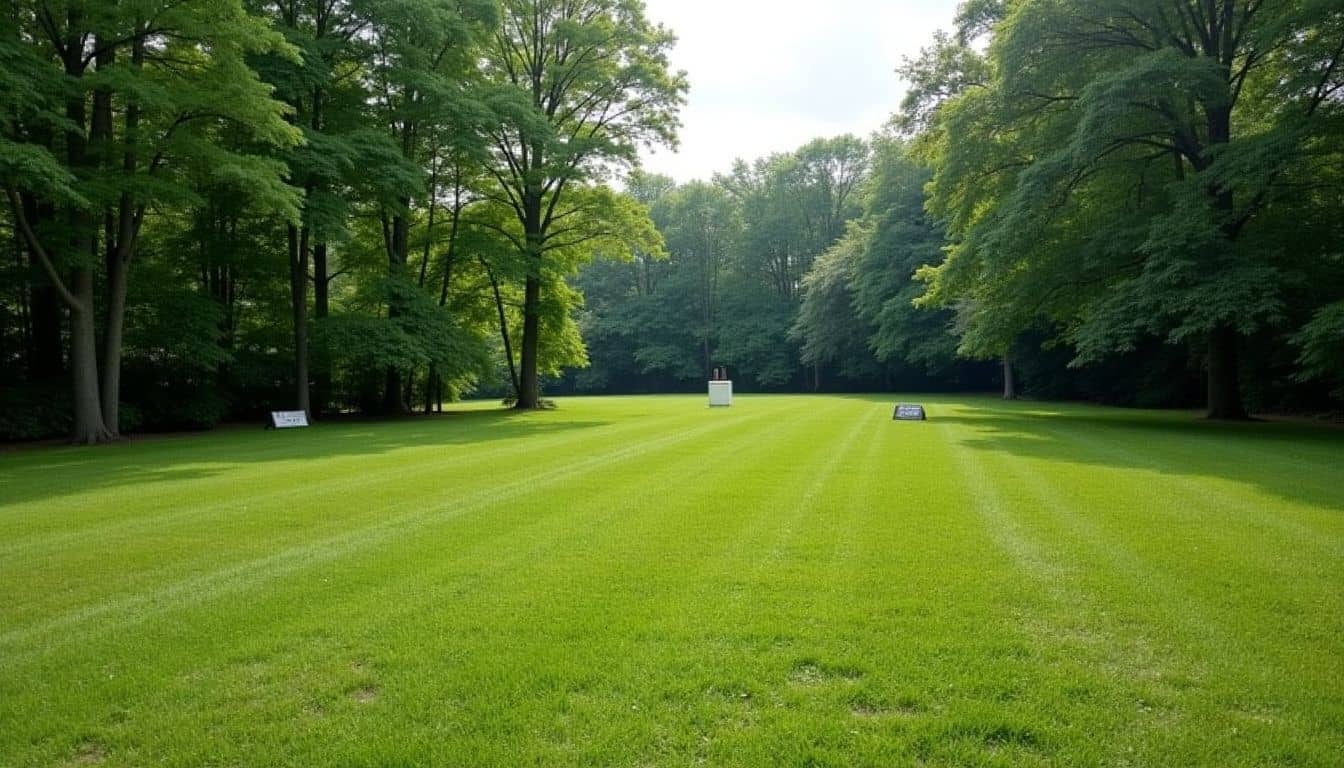
Your backyard size makes a huge difference if you want to practice shooting at home. In Texas, you’ll need at least 10 acres if you’re thinking of using a shotgun, air rifle, or BB gun.
To pull out the more serious hardware, like rifles or pistols, you’ll have to own over 50 acres. Maryland plays things safer, requiring shooters to be 150 yards away from any nearby occupied home—that’s a good football field and a half.
Up in Connecticut, small towns like Easton ask residents to have three acres or more, if they’re planning some backyard target fun. Rural properties let you breathe easier and shoot freely, but head closer to cities or suburbs, and the rules tighten up fast.
No one wants stray bullets flying around or neighbors marching over to complain about the noise.
State-Specific Guidelines for Backyard Shooting
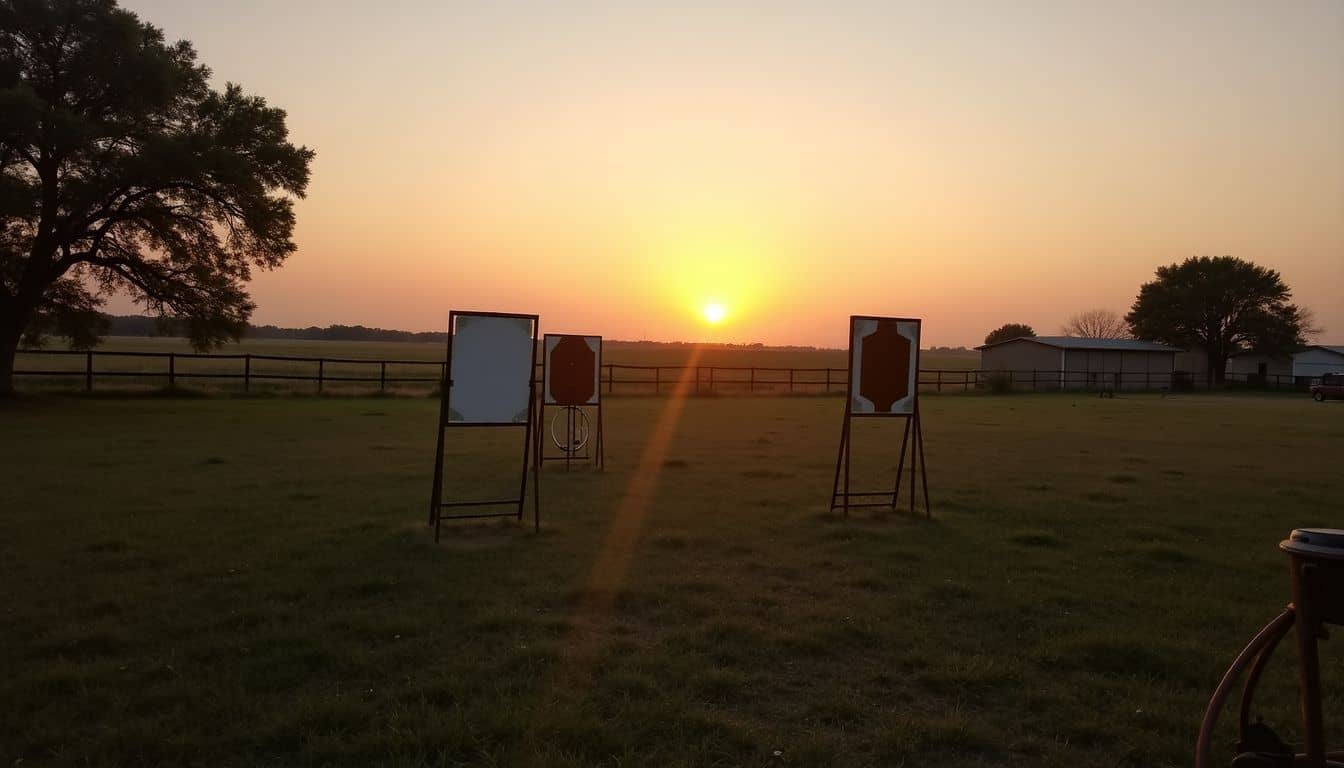
Each state has its own rules about backyard shooting that can make or break your plans. Texas allows more freedom for rural property owners, while California has strict limits on where you can discharge firearms near homes.
Texas
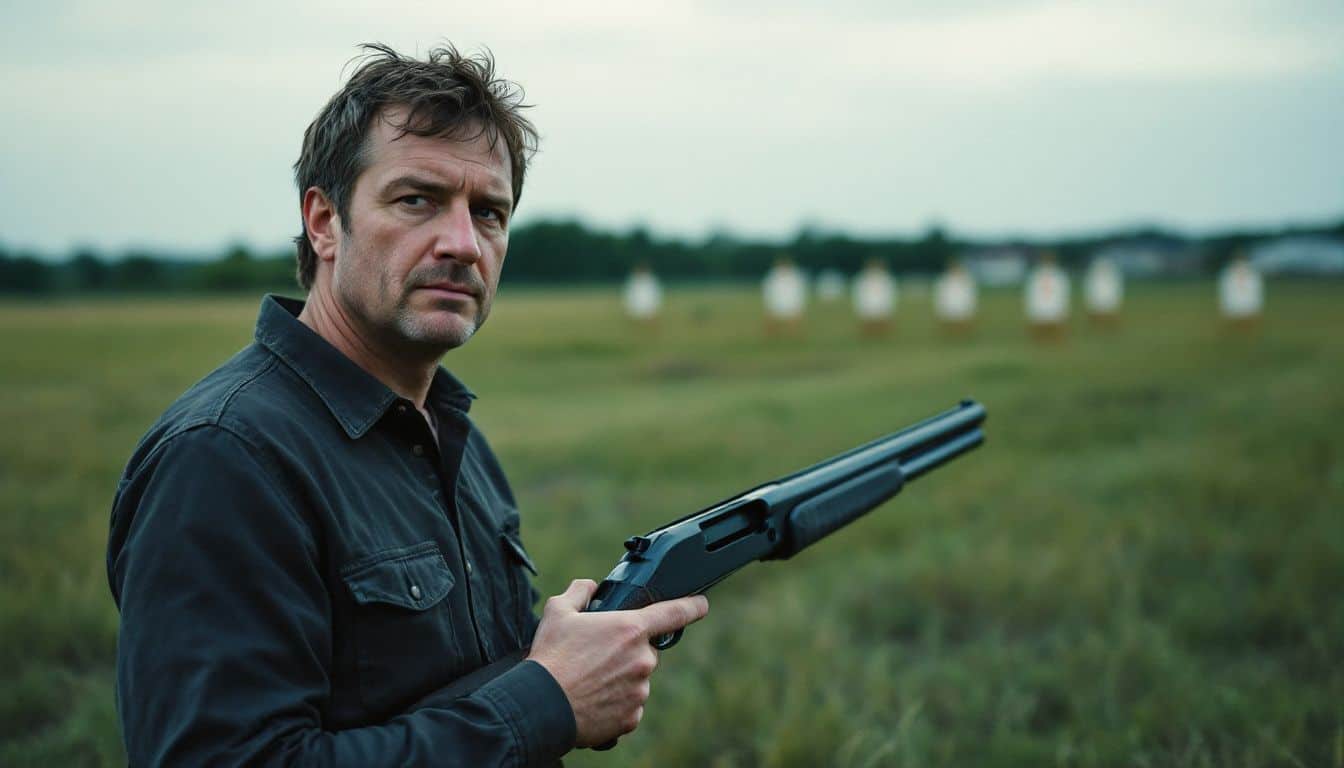
Texas lets you shoot guns on your own land, but property size counts big-time. The Texas Penal Code doesn’t joke around about careless shooting in populated areas—that’s a serious crime.
Got a yard between 10 and 50 acres? You’re good to go with shotguns, air rifles, or BB guns, as long as you’re at least 150 feet away from nearby homes. But if your property stretches over 50 acres, your safety buffer grows to 300 feet from any home that’s lived in.
Experience was made clear with a neighbor’s encounter. I figured this out after my neighbor called the sheriff, because my targets were a tad too neighborly.
Local laws can sometimes crank up the strictness compared to state rules. Counties or cities often have tough ordinances on shooting. A quick check online, or a call to your city clerk, can spare you a red-faced apology—and maybe an unexpected visit from your local deputies, too.
Maryland
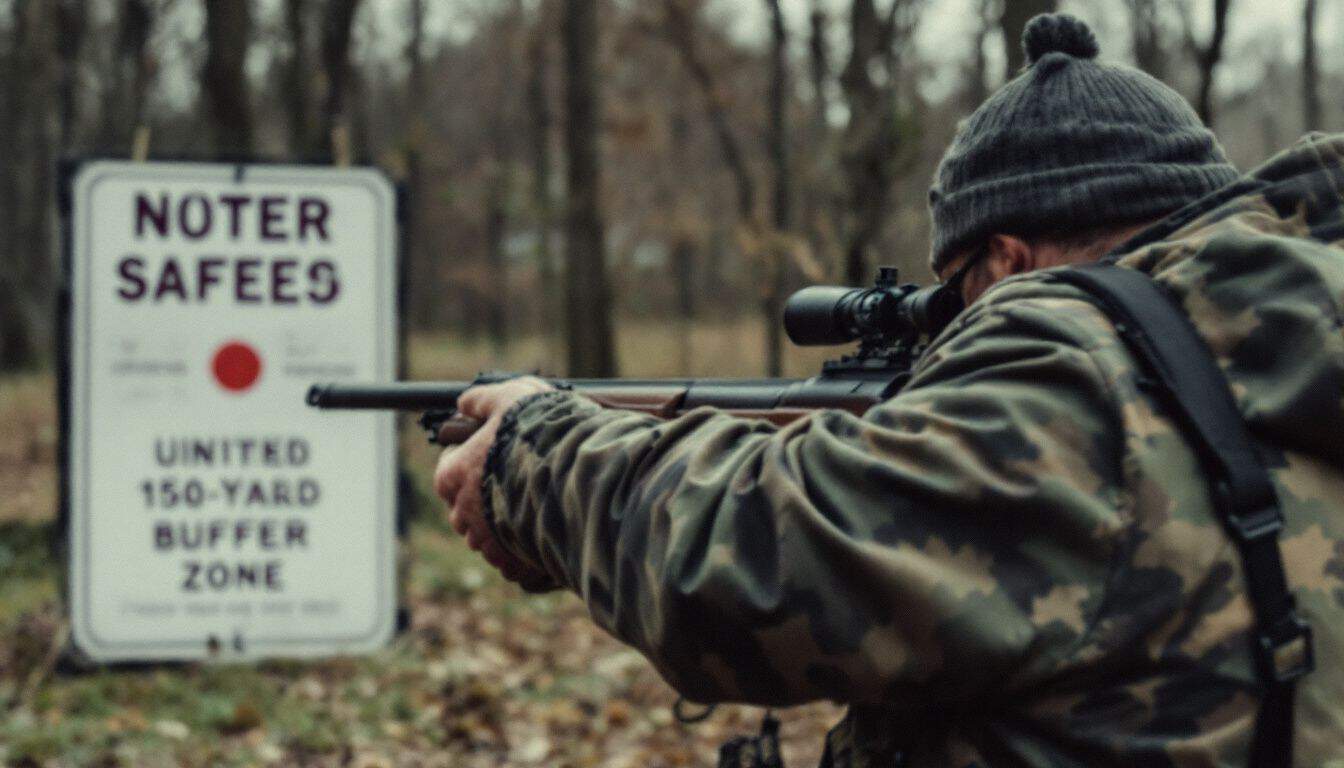 Maryland law lets you shoot freely on your own property, as long as every bullet stays strictly within your boundaries. To stay legal, you need to keep at least 150 yards between your firing spot and any nearby houses you don’t own.
Maryland law lets you shoot freely on your own property, as long as every bullet stays strictly within your boundaries. To stay legal, you need to keep at least 150 yards between your firing spot and any nearby houses you don’t own.
Folks in Carroll County have more leeway outside town limits, but a solid backstop is still required, just to keep everyone safe and sound.
Major Charles Rapp of the Carroll County Sheriff’s Office puts it bluntly: “Pointing guns toward homes people live in is absolutely off-limits, and hunters must always honor the 150-yard rule”.
As Major Rapp likes to say, “Safety means more than following laws—it’s about caring for your neighbors and protecting the community”.
Out west in California, firing off guns on private land is a whole different animal, with far tougher restrictions than Maryland residents deal with.
California
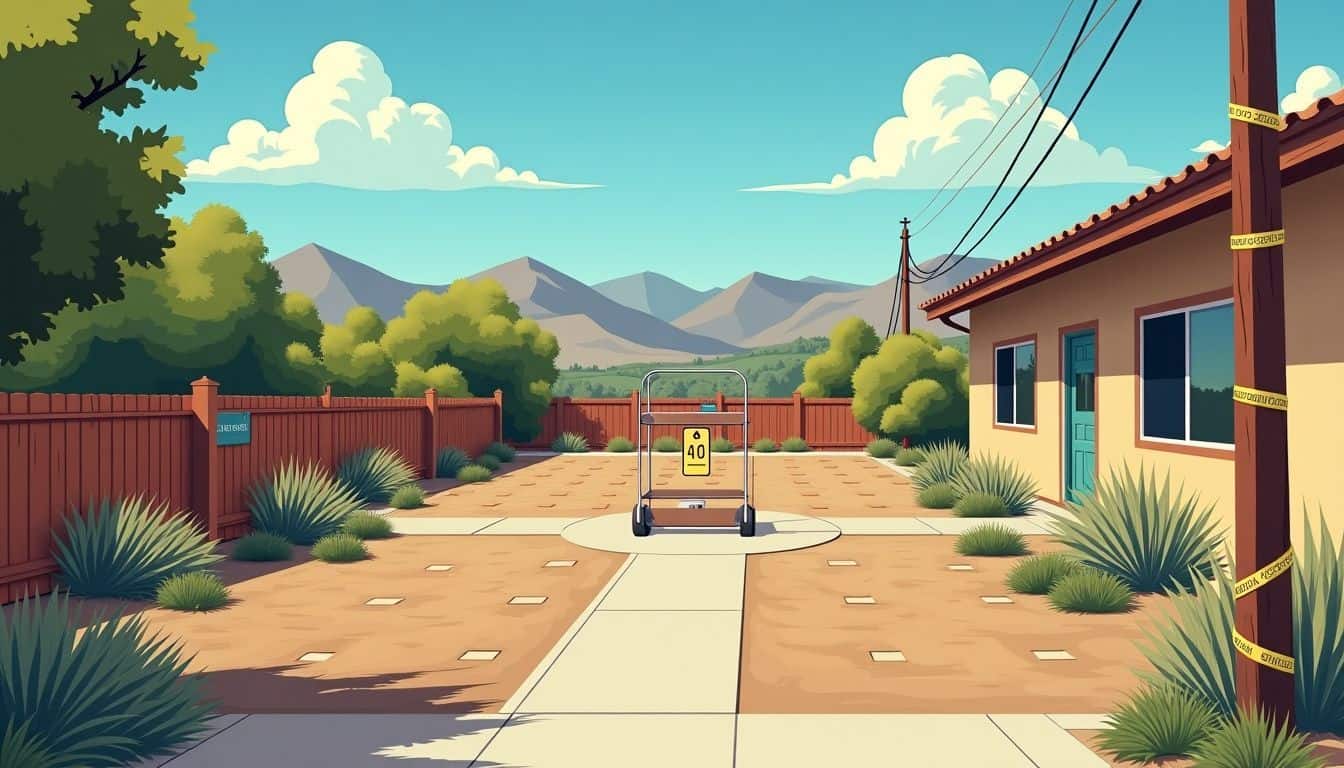
California takes backyard shooting pretty darn seriously, my friend. If you’re thinking of popping off shots near houses, Penal Code 246.3 spells big trouble. We’re talking possible misdemeanor charges, plus losing your gun rights for 10 years—ouch.
Even worse, if it’s treated as a felony, kiss gun ownership goodbye forever.
You might think rural zones mean free reign for target practice—but think again. California cops can slap you with Penal Codes 246.3 or 25850, even way out in the sticks. Just shooting tin cans out on your uncle’s farm could get sticky if you don’t double-check county maps and rules first.
Smart folks take a quick peek at local regulations before pulling triggers anywhere in the Golden State. Let’s mosey on over and see how Tennessee handles backyard shooting.
Tennessee
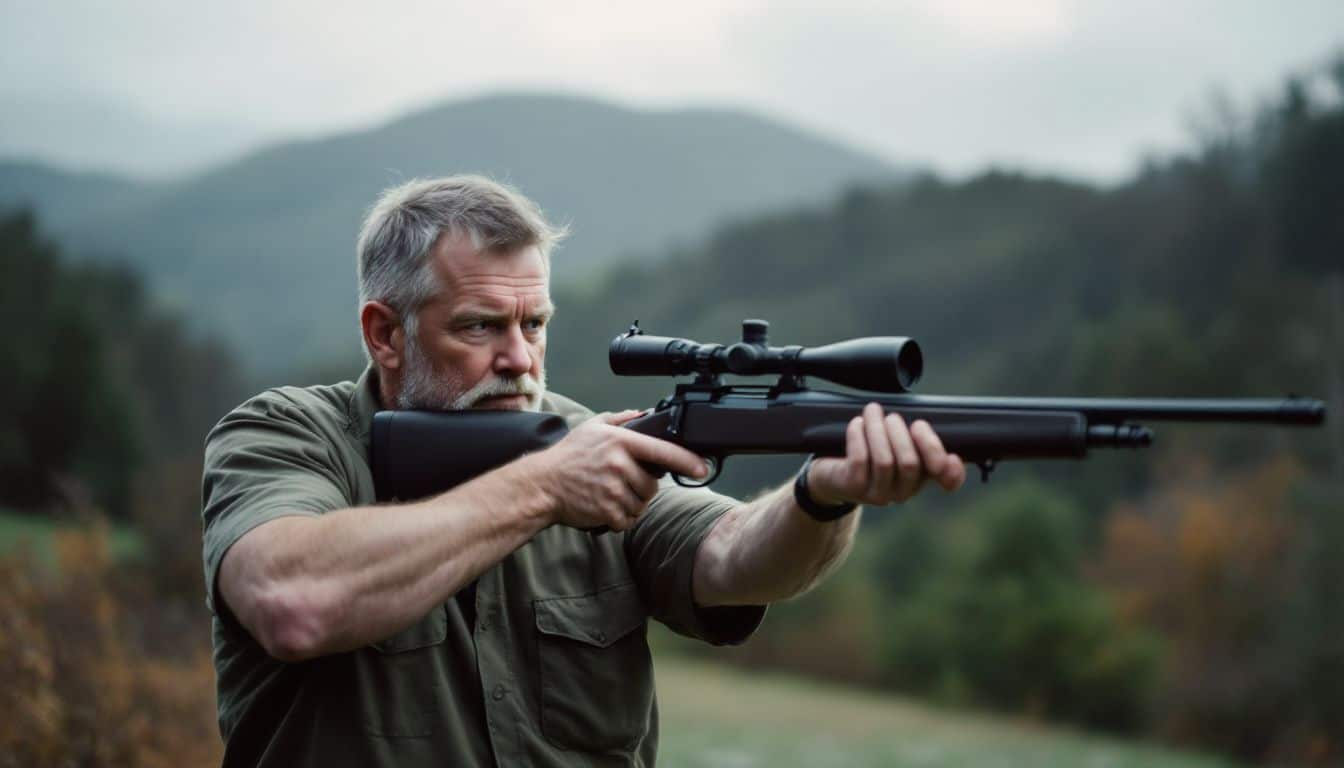
Tennessee’s gun laws cut rural property owners some slack, giving folks more freedom to shoot safely in their backyards. Still, the Tennessee Wildlife Resources Agency spells it out clearly—you’ve got to stay at least 100 yards away from someone else’s home unless they say it’s okay.
Residents in Williamson County, living beyond city boundaries, have legal rights to shoot on their own property—but size definitely counts here. Shooting rifles safely on smaller plots can get dicey real quick.
Every county has its own set of rules, and my understanding is that they change at times—checking out local regulations first is key before you click “buy” on your hunting rifle or start lining up cans.
Nobody wants to deal with angry neighbors, noise complaints, or the local sheriff knocking at the door because of careless shooting. Be smart, be safe, and let those targets know who’s boss.
Safety Considerations for Backyard Shooting
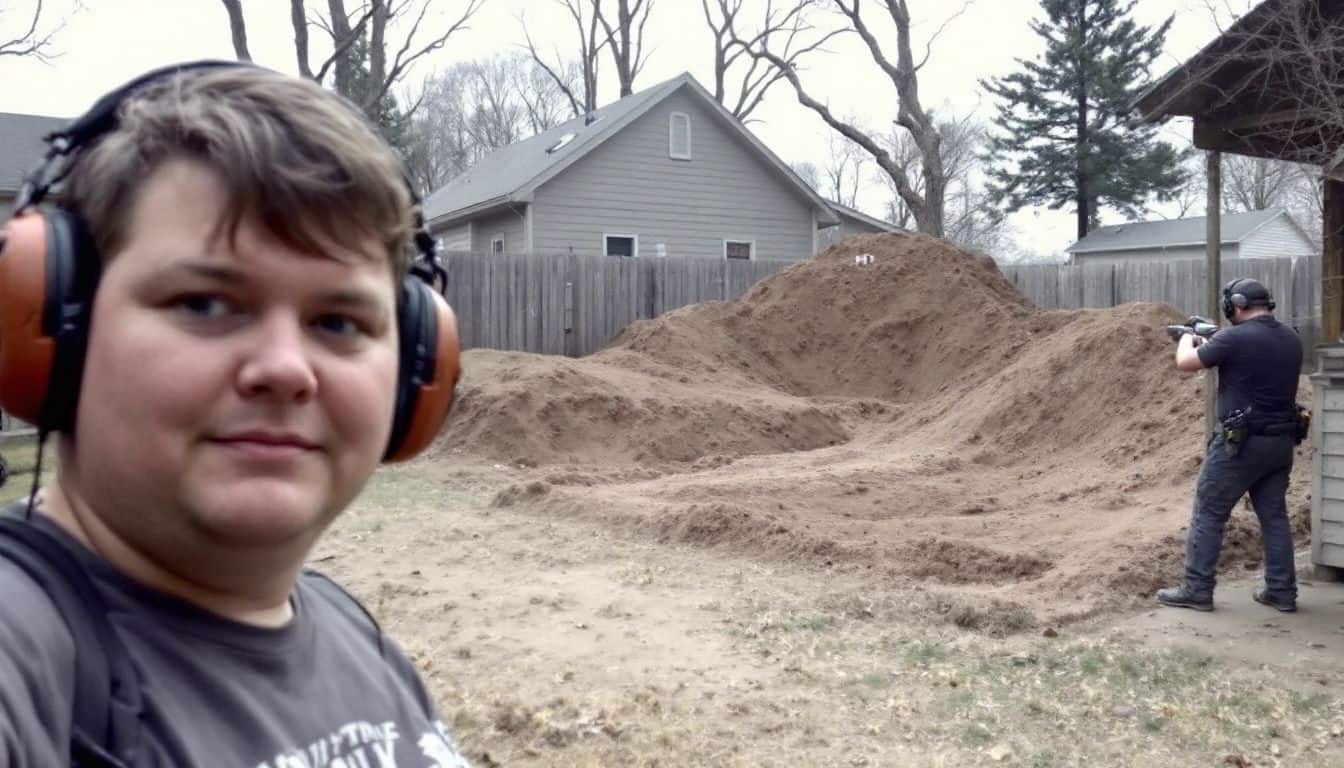
Safety should be your top concern when shooting in your backyard, with proper backstops being a must to stop stray bullets. A good backstop needs at least 4 feet of packed dirt or sand to catch rounds safely, and you should always check for any houses or buildings that might be in the line of fire.
Noise levels can reach harmful levels quickly, so always wear hearing protection and let your neighbors know before you start target shooting.
Backstops and Bullet Containment
A solid backstop is your primary shield for backyard shooting. Hands down, sand or dirt works best to halt bullets quickly and safely. Take my word for it—years ago, I nearly punched a hole through my neighbor’s fence during target practice.
Make your backstop wider and taller than the target itself, catching stray bullets that decide to wander.
Many underestimate how far bullets can travel. A small .22 bullet can fly as far as two miles. That unexpected fact floored me back when I first set up targets behind the house.
Building strong earth mounds behind your shooting targets keeps bullets contained and neighbors happy. Do not cut corners here; your freedom and peace with the neighbors depend on it.
Noise Levels and Hearing Protection
Guns are loud—really loud. A small .22 rifle bangs at around 140 dB; something larger, like a powerful hunting rifle, hits an ear-splitting 175 dB. That’s louder than an average jet engine.
Your ears take a heavy beating with every shot, and damage adds up faster than dirty laundry.
Suppressors help cut down noise by 17 to 24 decibels, but don’t leave your earmuffs at home. Good hearing protection is more than just helpful; it is the line between talking normally or suffering hearing loss over time.
Quality ear plugs or earmuffs are kept handy at the range. Plus, your neighbors won’t glare from their porches each time you’re practicing your aim—gunshots sound loud beyond your fence.
Suppressors are neighbor-friendly tools, and being considerate to those living nearby remains wise.
Proximity to Neighbors
Your neighbors can really make or break backyard shooting. Different states have their own distance rules from occupied homes—for instance, Maryland asks for a solid 150 yards buffer.
Texas is a bit more relaxed, needing just 150 feet on smaller properties, but bumping it to 300 feet for bigger parcels.
Shooting too close to other properties puts you on shaky legal ground. Chatting with neighbors ahead of time can smooth matters. Still, nothing beats the confidence you get from a firing range that already has safety systems in place.
This approach keeps you away from stray bullets or technical disputes with local officials.
Alternatives to Backyard Shooting
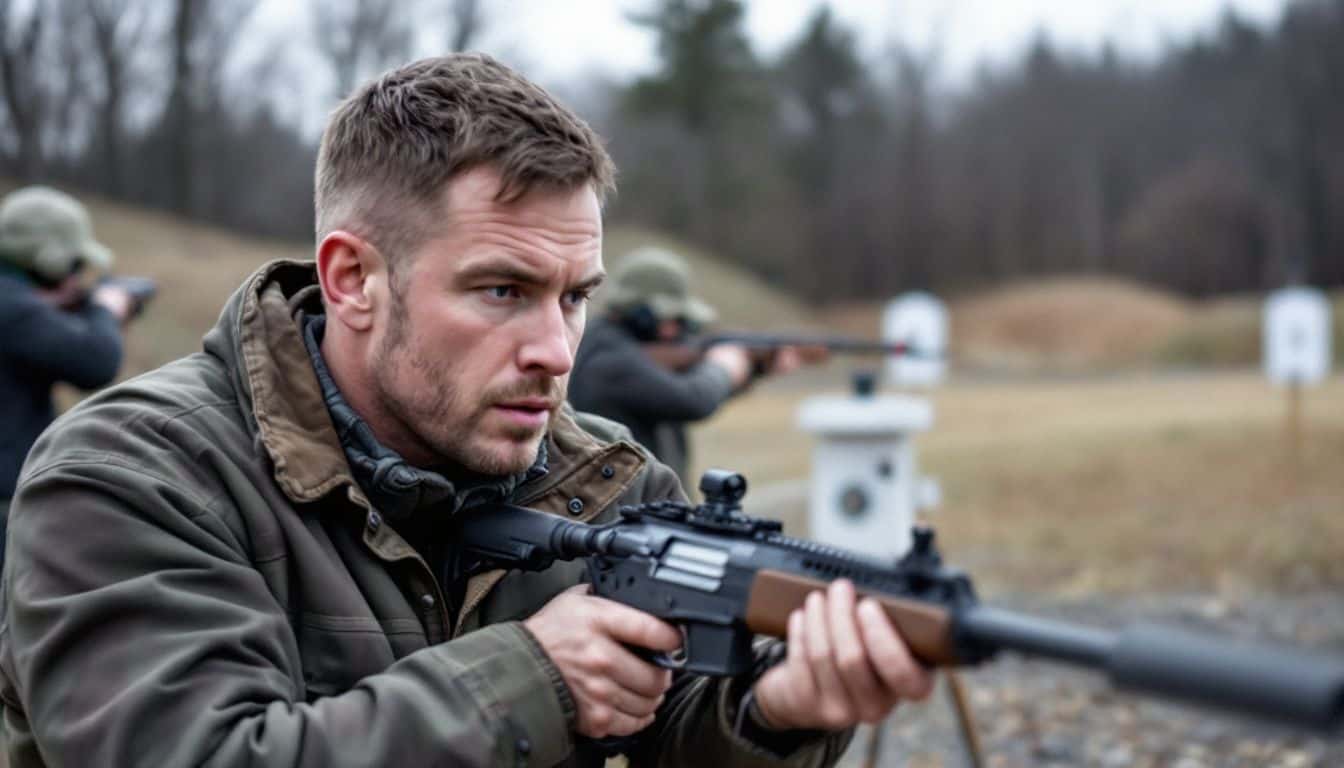
Tired of worrying about local rules and unhappy neighbors? Public shooting ranges offer a safe, legal place to practice with proper backstops and noise control. Many counties have outdoor areas set aside for target practice that prevent legal issues.
Gun clubs also provide a bonus – you’ll meet fellow shooters who can share tips while you improve your skills in a space created for firearm safety.
Shooting Ranges
Gun ranges are your safest bet for target practice without risking trouble with the law. Indoor ranges trap every bullet safely, far better than shooting cans off your fence and hoping neighbors do not call the cops.
I have spent many weekends at our nearby range—fellow shooters give good advice on firearm safety, keeping everyone safe and improving your aim until you hit the bullseye.
Some ranges rent out various firearms; it is like sampling ice cream flavors before deciding on a scoop. Plus, memberships can help reduce costs compared to paying fines after backyard incidents.
Designated Outdoor Shooting Areas
Outdoor shooting ranges are safer than practicing in the backyard—neighbors approve these areas with high burms to keep stray bullets where they belong.
I have seen ranges with burms that hold back stray rounds, ensuring safety for everyone on site. Public ranges often require sign-in, verification of a firearm license, and strict rules enforced by the range officer.
The studio of these areas keeps shooting safe and straightforward for everyone.
Consequences of Illegal Backyard Shooting
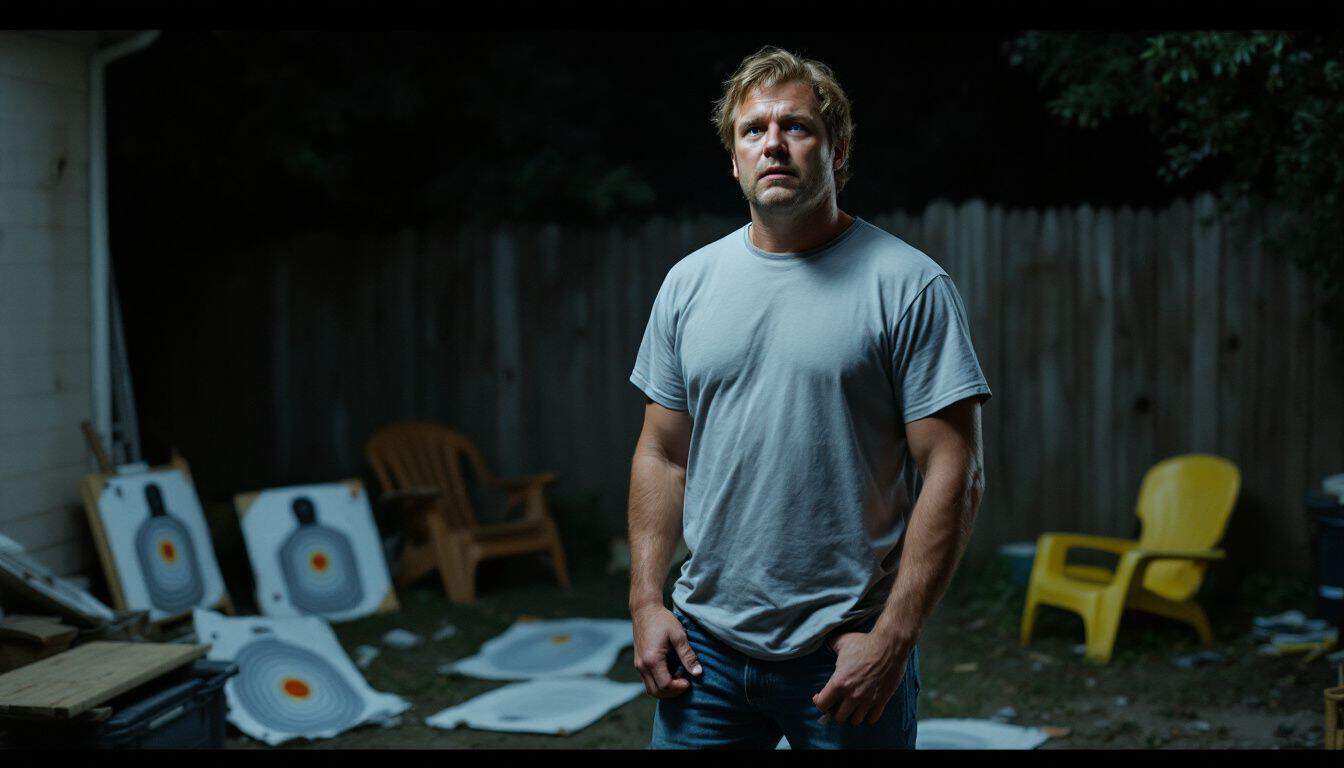
Breaking the law with backyard shooting can land you in trouble faster than a speeding bullet. You could face heavy fines, jail time, or even lose your right to own firearms if you ignore discharge of firearms regulations.
Your personal liability does not end with criminal charges – neighbors can sue you for damages, creating a financial burden that no insurance policy covers.
Legal Penalties
Ignoring backyard shooting laws can lead to major troubles—and that is putting it lightly. Shooting a gun illegally in your yard can earn you a misdemeanor, wiping out your right to own guns for a whole decade.
More serious violations might even mean felony charges, which can result in a lifetime ban on firearms.
A neighbor’s experience reminds us that a couple of rounds on a makeshift target in a suburban yard can lead to a hefty fine and a risk of jail time.
Court systems do not take reckless endangerment lightly; causing injury or property damage can leave you facing serious consequences.
Civil Liability
Fines hurt, but lawsuits hit harder—especially for backyard shooters. Neighbors can come after you legally if stray bullets damage property or injure someone. A client once experienced a misplaced shot flying two houses down and damaging a parked car.
A financial settlement from such a case can cost over a hundred thousand dollars. This emphasizes the importance of establishing a secure firing spot on your property to diffuse legal risks.
Civil suits over backyard mishaps arise more often than people expect, and homeowner insurance rarely covers such incidents.
Setting up a strong dirt mound or backstop is a wise choice to keep both safety and financial stability intact. Shooting at an authorized firing range with established safeguards eliminates these risks.
FAQs
1. Is it legal to shoot a gun in my backyard?
Depends a lot on your city and state rules, friend. Some neighborhoods strictly ban shooting near homes, schools, or occupied dwellings. States like California have strict distance rules. Your safest bet is to quickly check your area’s preemption laws and your county’s ordinances before pulling the trigger.
2. Do I need written permission to shoot on my property?
Yes, actually, in a few states you do—Maryland comes to mind. There, officials insist you get clear, written consent from property holders before firing any rounds. It might seem like bureaucratic boredom, but it helps neighbors stay friendly and avoids awkward conversations with local officers.
3. Are airguns subject to the same backyard shooting rules as firearms?
Airguns are not toy Nerf blasters, and local laws often have specific rules for airguns; it is best to quickly review local ordinances to be safe.
4. What safety measures should I take if backyard shooting is legal in my area?
First things first: build a strong backstop or berm on your property to catch stray bullets. A simple homemade range can work well. Always keep your weapon pointed somewhere safe, know what stands behind your target, and do not ever fire toward homes, roads, or playgrounds—you will appreciate the foresight.
This content is informational only and should not be considered legal advice. Consult with a licensed attorney regarding your specific situation. All information has been gathered from verified sources with proper citation and is focused on firearm safety and Maryland shooting laws. This content does not create an attorney-client privilege. References: Author Credentials, Google Content Quality Guidelines & Google Helpful Content Guidelines Summary.
References
- https://www.mass.gov/info-details/hunting-with-a-firearm-in-massachusetts
- https://malegislature.gov/laws/generallaws/partiv/titlei/chapter269/section12e
- https://www.mdshooters.com/threads/can-i-shoot-on-my-own-land.265061/ (2022-04-28)
- https://www.ctpost.com/news/article/backyard-shooting-guns-ct-laws-regulations-19609504.php (2024-08-11)
- https://texas.concealedcarry.com/2021/05/12/shooting-private-property/ (2021-05-12)
- https://www.2amaryland.org/legislative/2023/MARYLAND_GUN_LAWS_2023.pdf
- https://gunlaw.com/10-traps
- https://www.tngunowners.com/forums/topic/36117-what-are-the-rules-for-shooting-on-your-own-property/page/2/
- https://www.hunter-ed.com/missouri/studyGuide/Safe-Shooting-Rules/20202501_86472/
- https://pmc.ncbi.nlm.nih.gov/articles/PMC8588962/
- https://www.concealedcarry.com/law/can-i-shoot-in-my-backyard-in-florida/ (2023-08-14)
- https://www.airgunnation.com/threads/backyard-shooting-legalities-and-pragmatics.1275746/ (2022-10-17)
- https://www.abajournal.com/news/article/want_to_set_up_a_back_yard_shooting_range_florida_law_makes_it_easy_restric
- https://www.ussc.gov/research/research-reports/mandatory-minimum-penalties-firearms-offenses-federal-system

